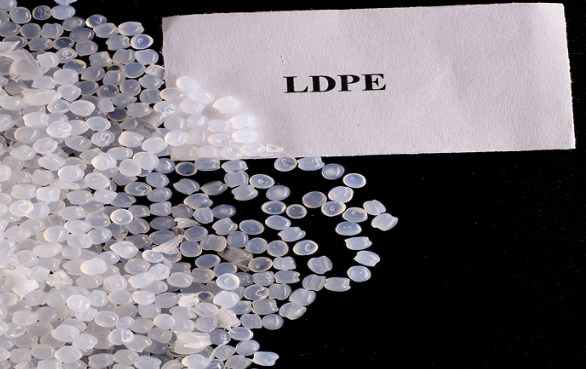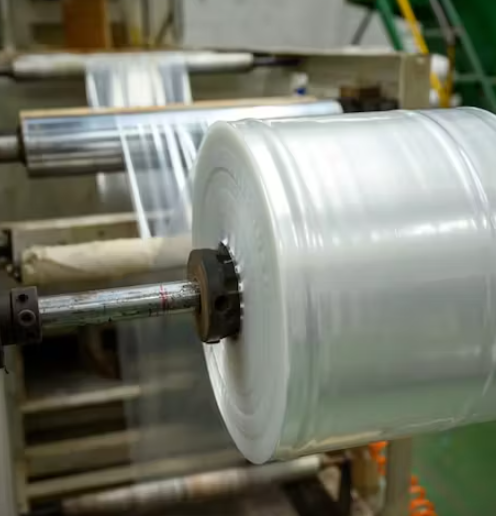The optimal processing temperature for LDPE injection molding typically ranges between 180°C to 240°C, depending on specific material and mold design.
Understanding LDPE Injection Molding
Low-Density Polyethylene (LDPE) is a widely used thermoplastic known for its flexibility and low temperature resistance. In the realm of injection molding, LDPE’s unique properties make it a popular choice for a range of products from plastic bags to containers. The process involves melting LDPE pellets and injecting them into a mold at a controlled temperature.

Overview of LDPE Material Properties
LDPE, characterized by its low density, ranges typically between 0.910–0.940 g/cm³. This thermoplastic stands out due to its high ductility and impact strength, making it resistant to cracking under stress. Additionally, it has a melting point around 105-115°C, which is relatively low compared to other plastics. LDPE is also known for its excellent chemical resistance, making it suitable for containers holding everything from food to cleaning products.
Significance of Processing Temperature in Injection Molding
The processing temperature of LDPE in injection molding is critical for achieving the desired quality in the final product. Operating within the optimal temperature range, typically between 180°C and 240°C, ensures smooth flow of the material into the mold. This range helps maintain the integrity of LDPE’s properties, such as flexibility and toughness. Overheating can lead to degradation of the material, affecting its color and strength. On the other hand, temperatures that are too low can result in incomplete filling of the mold, leading to defects in the molded parts.
Proper temperature control is essential for balancing the material’s flow properties with its thermal stability. This balance is crucial for producing high-quality LDPE products that meet the required specifications in terms of dimensions, durability, and appearance. For instance, maintaining the correct temperature can significantly impact the product’s lifespan, which can range from several years for disposable items to decades for more durable goods. The efficiency of the molding process also hinges on this, as optimal temperatures can reduce cycle times and energy consumption, thereby lowering production costs.
Optimizing Processing Temperature for LDPE
Optimizing the processing temperature for Low-Density Polyethylene (LDPE) is a critical step in injection molding to achieve the highest quality, efficiency, and cost-effectiveness. The right temperature not only ensures the best physical properties in the final product but also maximizes the lifespan of the equipment and minimizes energy consumption.
Factors Influencing LDPE Processing Temperature
Several key factors play a crucial role in determining the optimal processing temperature for LDPE. The molecular weight of the LDPE grade is a primary factor; higher molecular weights generally require higher processing temperatures. The design of the mold also influences the temperature setting. Complex molds with thin walls or intricate details might require higher temperatures to ensure the material flows adequately into all parts of the mold.
Another significant factor is the desired properties of the final product. For instance, products that need to be more rigid or bear higher loads may require higher temperatures to ensure the LDPE’s properties are fully realized. Conversely, products that require high flexibility might be produced at slightly lower temperatures.
Environmental conditions in the manufacturing facility, such as ambient temperature and humidity, can also affect the processing temperature. Adjustments might be necessary to counteract these external factors.
Techniques for Determining Optimal Temperature Range
Determining the optimal temperature range for LDPE processing involves a combination of theoretical knowledge and empirical testing. Initially, manufacturers refer to the LDPE material data sheets, which provide a recommended temperature range based on the resin’s properties. These sheets are a starting point, offering a general guideline based on the resin’s characteristics.
From there, trial runs are essential. Small-scale tests help to refine the temperature settings based on the specific equipment and mold design being used. Monitoring the quality of the finished product, such as its clarity, strength, and surface finish, provides feedback for further adjustments.
Advanced techniques like computer-aided engineering (CAE) software can simulate the injection molding process, offering insights into how different temperatures affect the flow of LDPE within the mold. This technology helps in predicting potential issues like warping, sink marks, or incomplete filling, allowing for preemptive adjustments to the temperature settings.
Challenges and Solutions in LDPE Molding
Molding Low-Density Polyethylene (LDPE) presents unique challenges, particularly when it comes to managing processing temperatures. The right temperature settings are crucial for ensuring the quality of the final product while maintaining operational efficiency and cost-effectiveness.
Common Issues at Incorrect Temperatures
When the processing temperature is not optimized for LDPE, several issues can arise:
- Inadequate Flow or Filling: At temperatures that are too low, LDPE may not flow properly into the mold, leading to incomplete filling. This issue is especially problematic in designs with fine details or thin walls.
- Material Degradation: Excessively high temperatures can cause LDPE to degrade, resulting in discoloration and a decrease in the material’s inherent strength.
- Surface Imperfections: Issues like warping, sink marks, or surface blemishes can occur if the temperature is not properly controlled.
- Increased Cycle Times and Energy Consumption: Incorrect temperatures can lead to longer cycle times and higher energy usage, directly impacting production efficiency and costs.
Adjusting Process Parameters for Better Results
To address these challenges, several adjustments can be made:
- Refining Temperature Settings: Based on the specific grade of LDPE used, adjust the temperature within the range of 180°C to 240°C. This range may vary slightly depending on the equipment and mold design.
- Monitoring Mold and Material Behavior: Regularly check the quality of the molded products for any defects. This inspection helps in fine-tuning the temperature settings for optimal results.
- Utilizing Advanced Technology: Employing CAE software for simulations can predict and mitigate potential issues before they occur in the actual molding process.
Advanced Techniques in LDPE Injection Molding
The field of LDPE injection molding is evolving rapidly, with advanced techniques focusing on enhancing temperature control and understanding its impact on the final product quality. These innovations are pivotal in increasing efficiency, reducing costs, and improving the overall quality of LDPE products.
Innovations in Temperature Control
In the realm of LDPE injection molding, cutting-edge temperature control technologies are making significant strides:
- Precision Heating Systems: These systems offer more accurate temperature control, reducing fluctuations that can affect the molding process.
- Advanced Sensors and Feedback Loops: Integration of sensors in the molding equipment allows for real-time monitoring and adjustments, ensuring consistent temperature maintenance.
- Energy-Efficient Heaters: Reducing energy consumption while maintaining optimal temperatures, these heaters contribute to lower operational costs and environmental impact.
These technological advancements are not only enhancing the efficiency of the process but also contributing to significant cost savings. For example, precision heating systems can reduce energy usage by up to 20%, directly impacting the overall production budget.
Impact of Processing Temperature on Final Product Quality
The temperature during the LDPE injection molding process has a direct impact on the quality of the final product:
- Structural Integrity: Proper temperature control ensures that LDPE maintains its strength and durability, which is essential for products subjected to stress or load.
- Surface Finish: Optimal temperatures result in smoother surfaces, free of defects like warping or sink marks.
- Dimensional Accuracy: Consistent temperatures help in achieving the precise dimensions as per design specifications, crucial for components requiring high tolerance levels.

Case Studies: LDPE Injection Molding
Exploring case studies in LDPE injection molding reveals insightful details about industrial applications and how temperature considerations directly influence the success of these projects. These studies highlight the importance of precision in temperature control and the resultant impact on product quality and cost-efficiency.
Industrial Applications and Temperature Considerations
LDPE is extensively used in various industries due to its versatility and durability. Key applications include:
- Packaging Industry: Producing flexible containers and wrapping films. Optimal temperature control is crucial for achieving the right balance of strength and flexibility in these products.
- Medical Equipment: Manufacturing items like tubing and containers, where precision in dimensions and material purity is vital.
- Consumer Goods: Creating household items and children’s toys, demanding high safety standards and flawless surface finish.
In these applications, maintaining a precise temperature range is essential. For instance, in the packaging industry, a deviation of just +/- 10°C from the optimal temperature can lead to a 5% increase in material wastage and a 3% decrease in production speed.
Analysis of Successful LDPE Molding Projects
Studying successful LDPE molding projects offers valuable insights into best practices:
- Automotive Component Manufacturing: Implementing advanced temperature control led to a 15% reduction in cycle time and a 10% increase in product longevity.
- Food Packaging Solutions: Precise temperature management resulted in a 20% improvement in product durability and a 30% reduction in production costs due to decreased material wastage.
- Children’s Toy Production: Enhanced temperature control technologies led to a 40% decrease in defective products, significantly improving overall product quality and safety.




